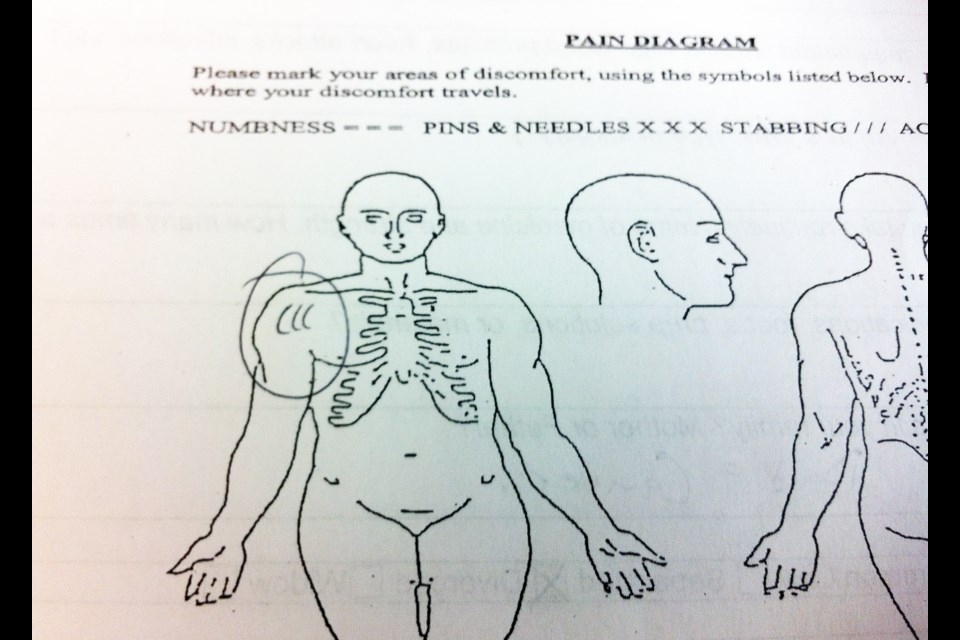I've been ushered into an examination room at Fortius Sport & Health and have grabbed a plastic model of what looks like a very gristly cut of meat.
“He likes to have the limb he’s looking at in the room,” says Jamie, the assistant who’s let me in.
I’m waiting for sports doctor Jason Crookham, who’s going to kick off my 14 week “Fortius Challenge” with an examination of my right shoulder, which I’m hoping will be able to hold up through a game of tennis after all is said and done.
Like most of the practitioners I encounter at Fortius, Crookham seems way overqualified to fix up a 47-year-old mother of three so she can play recreational tennis.
A former professional and Canadian national team cyclist, Crookham is former team physician to the Abbotsford Heat AHL hockey team, the NCAA Big Ten University of Michigan Wolverines football, basketball, hockey and soccer teams, and the Maxxis Professional Mountain Bike Team.
He asks me a few questions, puts me through a series of movements and then reaches for the plastic model – my new friend, glenohumeral joint.
My issue is a “bread and butter” sports medicine problem, he says, one that will fit perfectly into my Fortius Challenge.
The glenohumeral or shoulder joint, he explains, is a mobile but unstable one, like a golf ball resting on a golf tee.
Unlike the true ball-and-socket hip joint, which has a lot of “bony stability,” the shoulder is held in place mostly by four muscles that make up the rotator cuff.
My shoulder’s problem is basically looseness, according to Crookham.
Since things are moving around more than they should, stuff is getting “pinched,” and that’s where the pain is coming from.
Little calcifications can also grow in the joint and cause similar symptoms, so Crookham says he’ll be looking at some X-rays I had done a couple of years ago before our follow-up appointment, just in case.
In the meantime, he’s pretty sure a physical rehab program to strengthen the muscles of my rotator cuff (my new buddies supraspinatus, infraspinatus, teres minor and subscapularis) is the way to go.
“I think you’re going to do great with rotator cuff strengthening and stabilizing exercises.”
Next stop, physiotherapy.
Follow Cornelia’s road to recovery at www.burnabynow.com.



